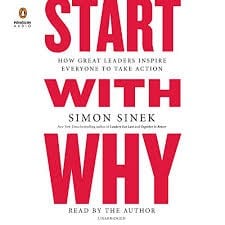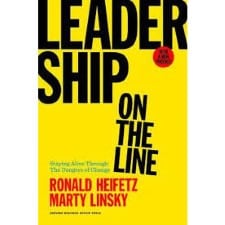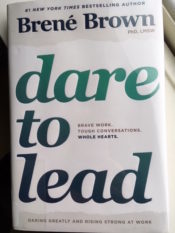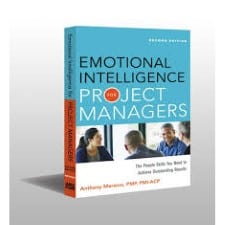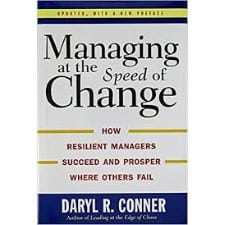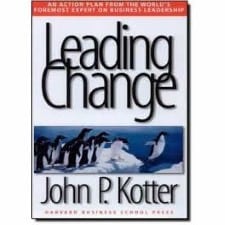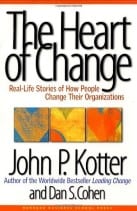Recommended Books
Workplace Communication
The Hard Truth About Soft Skills: Workplace Lessons Smart People Wish They’d Learned Sooner by Peggy Klaus, 2008.
This is a very useful book to understand how important and necessary soft skills are in the workplace. It also encapsulates much of the work I do with clients in order to help them build their emotional intelligence and navigate their career.
Quiet: The Power of Introverts in a World That Can’t Stop Talking by Susan Cain, 2013.
At least one-third of the population is introverted, and they are undervalued in the workplace today. Wharton management professor Adam Grant found in his research that extroverted leaders enhance group performance when employees are passive, but introverted leaders are more effective with proactive employees. Read this book and you’ll better understand your boss, coworkers, direct reports and/or yourself.
Brag!: The Art of Tooting Your Horn Without Blowing it by Peggy Klaus, 2004.
In this book, you learn to create a “bragalogue”(or short, enthusiastic, continually updated story showcasing strengths and accomplishments) you can deliver comfortably and sincerely. This is a key to “planting seeds for the future” or standing out in interviews, performance reviews or networking situations.
Difficult Conversations: How to Discuss What Matters Most by Douglas Stone, Bruce Patton, & Sheila Heen, 2000.
Here are strategies for disarming the impulse to lay blame and for exploring one’s own contribution to a tense situation. There are specific recommendations for bringing emotions directly into a difficult discussion by talking about them and paying attention to the way they can subtly inform judgments and accusations. Understanding what is happening beneath the conversation enables an opportunity for learning.
Real Influence: Persuade Without Pushing and Gain Without Giving In by Mark Goulston and John Ullmen, 2013.
In this post-pushing and post-selling world, influence should no longer be seen as something you do to someone else to get what you want. Real influence isn’t even about what you want. Instead it’s about forging strong connections by focusing on other people’s viewpoints and giving something away before asking for anything in return. Connective listening is listening from their there instead of your here. Read more.
Leadership
Start with Why: How Great Leaders Inspire Everyone to Take Action by Simon Sinek, 2011.
People don’t buy what you do, they buy why you do it. And people follow others for the same reason. Using Apple, Southwest Airlines and Martin Luther King, Jr. as examples, Sinek explains why some people and organizations are more innovative, more profitable, and command greater loyalties from customers and employees. A compelling why will always outpace any compelling how.
Leaders Eat Last: Why Some Teams Pull Together and Others Don’t by Simon Sinek, 2014.
Workplaces today are full of cynicism, paranoia and self-interest. The best organizations foster trust and cooperation because their leaders build what Sinek calls a “Circle of Safety,” which separates the security inside the team from the challenges outside. This Circle of Safety, according to Sinek, enables teams to be stable, adaptive and confident where every member feels that they belong and are focused on the right things.
Daring Greatly: How the Courage to be Vulnerable Transform the way we Live, Love, Parent and Lead by Brene Brown, 2012.
“It’s uncomfortable to stand up in front of strangers. It’s uncomfortable to propose an idea that might fail. It’s uncomfortable to challenge the status quo. It’s uncomfortable to resist the urge to settle. When you identify the discomfort, you’ve found the place where a leader is needed. If you’re not uncomfortable in your work as a leader, it’s almost certain you’re not reaching your potential as a leader.”
Own the Room: Discover Your Signature Voice to Master Your Leadership Presence by Amy Jen Su and Muriel Maignan Wilkins, 2013.
In order to own the room you must do two things really well: 1) demonstrate your authentic value and distinction, and 2) connect to others in a positive way. The leaders who are able to be authentic while also connecting with and impacting others have a signature voice – a means of self-expression that is uniquely and distinctly their own. It takes a combination of what the authors call the driving voice and supportive voice in order to perfect your signature voice.
How Women Rise: Break the 12 Habits Holding You Back from Your Next Raise, Promotion or Job by Sally Helgesen and Marshall Goldsmith, 2018.
Great advice from two experienced executive coaches on the habits more common in women that
prevent them from rising to greater leadership roles. For example, Habit 4: Building rather than relationships, is rooted in the belief that you should not call on others for help until you’ve done your
homework and know the parameters of your job. This reluctance to call on others may, however, keep you from behaving in a way that is beneficial to the organization as well as advancing your career.
First, Break all the Rules: What the World’s Greatest Managers do Differently by Marcus Buckingham and Curt Coffman, 1999.
The authors use Gallup’s study of 80,000 managers in 400 companies to reach the conclusion that
a company that lacks great frontline managers will bleed talent, no matter how attractive the compensation packages and training opportunities. There are also suggestions on how to become a great manager, that include interviewing for talent, developing a performance management
routine, and learning how to get the best performance from talented employees.
Leadership on the Line by Ronald A. Heifetz and Martin Linsky, 2002.
and observe yourself in action? Do you know when and how to turn up the heat or turn down the heat to get the work done. Can you give the work back in the face of resistance? This is a great book for gaining perspective and putting it into action in your workplace.
Emotional Intelligence: Why it Can Matter More Than IQ by Daniel Goleman, 1995.
The author makes a convincing case for emotional intelligence being the strongest indicator of
human success. He defines emotional intelligence in terms of self-awareness, altruism, personal
motivation, empathy, and the ability to love and be loved by friends, partners, and family members. People who possess high emotional intelligence are the people who truly succeed in work as well as play, building flourishing careers and lasting, meaningful relationships.
Self Leadership and The One Minute Manager by Ken Blanchard, Susan Fowler and Laurence Hawkins, 2005
Managers are too busy and distracted to effectively mentor employees, so workers need to assume responsibility for their own failures and successes. The modern workplace requires a great deal of self-reliance. “Ultimately, it’s in your own best interest to accept responsibility for getting what you need to succeed in the workplace.” Great advice for the responsibility we all need to accept
The Servant Leader: How to Build a Creative Team, Develop Great Morale, and Improve Bottom Line Performance by J. Autry, 2001.
Servant leadership will produce fulfilling emotional, psychological, and spiritual rewards for everyone involved. The author shows you how to remain true to the servant leadership model when handling day-to-day and long-term management situations. You’ll learn how to manage with respect and honesty and how to empower employees to achieve new levels of satisfaction.
The Speed of Trust: The One Thing That Changes Everything by Stephen M. R. Covey, 2006.
Son of the famous Stephen R. Covey, the author outlines 13 behaviors of trust-inspiring leaders,
such as demonstrating respect, creating transparency, righting wrongs, delivering results and
practicing accountability in order to help you move your organization along more quickly.
Good to Great: Why Some Companies Make the Leap . . . And Others Don’t by Jim Collins, 2001.
What separates successful companies for those that are exceptional? At the heart of those rare and truly great companies was a corporate culture that rigorously found and promoted disciplined people to think and act in a disciplined manner.
Dare to Lead by Brene Brown, 2018.
When we dare to lead, we don’t pretend to have the right answers; we stay curious and ask the right questions. ….. Daring leadership in a culture defined by scarcity, fear, and uncertainty requires skill-building around traits that are deeply and uniquely human. Another excellent book by Brown, who provides a compelling argument and roadmap for leaning into the challenge of leadership with vulnerability and courage.

Insight by Tasha Eurich, 2017.
Though most people believe they are self-aware, research has found that few of us actually are. Further, the higher one rises in leadership, the less likely they are to remain fully self-aware. Eurich provides a fascinating look at how we see ourselves, how others see us and how we can learn to increase that awareness. This book is highly recommended for anyone looking to grow their emotional intelligence and overall leadership capacity. Read more.
[vc_single_image image=”” img_size=”






